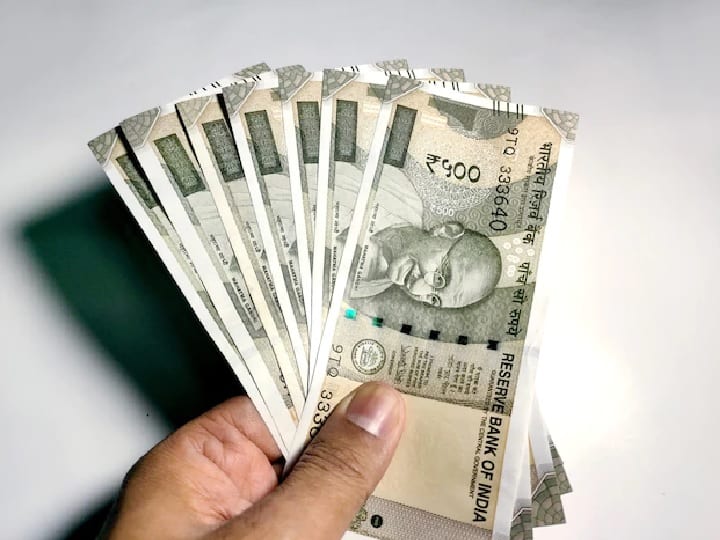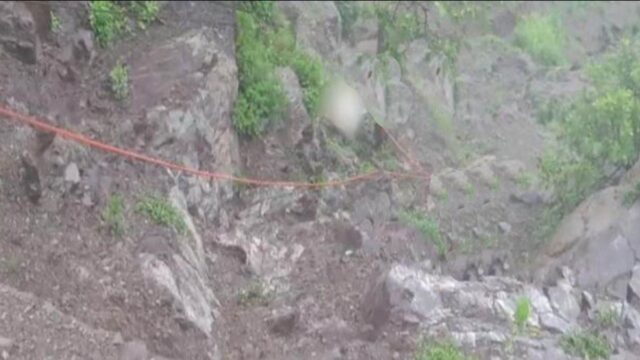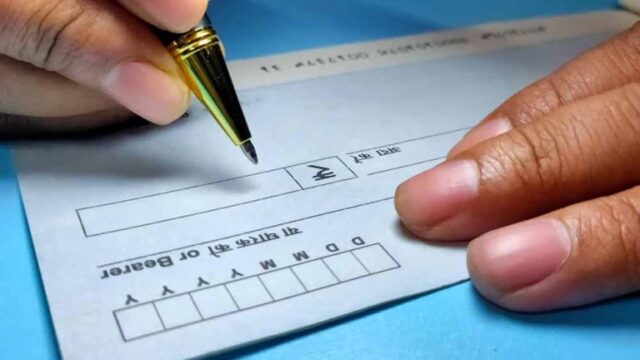Even after 6 years of demonetisation, the practice of counterfeit notes is unbridled, most of the fake notes are of 500 rupees.

While taking the decision of demonetisation in the year 2016, the central government had said that one of its many benefits would be to curb the use of counterfeit notes. But if you look at the latest annual report of the Reserve Bank of India, it is clear that there has been an increase in the circulation of counterfeit notes in India.
The annual report for the financial year 2021-22 said that the RBI detected 101.9 percent more counterfeit notes of Rs 500 denomination and 54.16 percent more counterfeit notes of Rs 2,000 denomination as compared to the year 2020-21.
Similarly, an increase of 16.4 percent was registered in the fake 10 rupee notes, 16.5 percent in the fake 20 rupees notes and 11.7 percent in the fake notes of 200 rupees. There was a decline of 28.7 percent and 16.7 percent respectively in the fake notes of only 50 and 100 rupees.
According to the RBI, out of the total Fake Indian Currency Notes (FICN) detected in the banking sector during 2021-22, 6.9 percent were found in the Reserve Bank and 93.1 percent in other banks.
It is worth noting that the fake notes that have been talked about in the RBI report are only caught in banks and this does not include the counterfeit notes seized by the police and other enforcement agencies.
According to the latest data of the National Crime Records Bureau (NCRB), a total of 8,34,947 counterfeit notes worth more than Rs 92 crore were seized during the year 2020. These were 190.5 percent more than the 2,87,404 fake notes worth Rs 25 crore seized in the year 2019.
Why is the trend of fake notes increasing?
Professor Arun Kumar is an economist and has taught economics at JNU for three decades. He is also the author of the book ‘The Black Economy in India’.
He says, “There is a lot of profit in it (in the business of counterfeit notes). Like RBI takes 2.5-three rupees to print a 500 rupee note. Those who are making fake notes, if they make even 10 rupees to make a fake note Even if they spend, they have a profit of Rs 490.
According to Professor Arun Kumar, easily available technology is also a major reason for the circulation of fake notes. He says, “It is difficult to curb counterfeit notes because it is possible to make fake notes with the technology available today. It will continue to be as it was before. Demonetisation will not stop counterfeiting of counterfeit notes. Secondly. The thing is that anti-India state actors are involved in making fake notes. And they also have technology available.”
On the government’s claim of curbing counterfeit notes during demonetisation, Professor Arun Kumar says that it had nothing to do with demonetisation. “It was a misconception that we will stop counterfeit notes,” he says.
What is the meaning of RBI report?
According to Professor Arun Kumar, the number of counterfeit notes that are caught is very less. They say that if there are a hundred fake notes running in the market, then only three-four of them are caught. He says, “The official figures do not give an accurate picture of counterfeiting. What is being caught is like a tip of the iceberg (a very small part of the original quantity) because there is thirty times or fifty times the fake currency in circulation. Is.” At the same time, he also says that if the 100 percent increase in fake notes of Rs 500 is only showing that banks may have caught more fake notes, then “it does not know how many fake notes are actually circulating. ”
Professor Arun Kumar says that if only three percent of fake notes are caught and the rest continue to be used, then the reason for this is that common people do not understand whether the notes they are using are real or fake. He says, “The circulation of counterfeit notes is a big challenge. When news about fake notes spreads, people stop taking notes and transactions become difficult. When counterfeit notes increase, its credibility also decreases. Is.”
‘Easy to copy with modern technology’
From time to time, there have also been reports of catching printing presses being used to print counterfeit notes from across the country. Many arrests have also taken place in such cases. Apart from printing press, many cases of printing fake notes have also been caught by color printers.
From time to time, the Reserve Bank of India has been taking various measures to enhance the security of banknotes so that counterfeiting of counterfeit notes can be made difficult and costly.
To enhance the security of notes, methods like water-mark, security thread or security thread, secret image, microlettering, seal and identification mark have been used in them. Along with this, RBI also conducts awareness programs for the public and cash operators so that it can be easier for the people to identify counterfeit notes, but still dealing with counterfeit notes in the country has emerged as a big challenge.
Professor Arun Kumar says, “As technology gets better, RBI is taking more security measures but copying notes has become equally easy. As new features are added to the notes to increase the security We can’t say that putting security features in will make everything secure. Almost all security features are copied.
So, how can the problem of counterfeit notes be tackled?
According to Professor Arun Kumar, “The circulation of counterfeit notes cannot be stopped, it can only be reduced.” They say that banks will have to be more cautious for this. He says, “They have to make sure that if they come across a fake note, then stop it there and don’t allow it to reach the market any further.”
As counterfeit notes are becoming increasingly difficult to detect, experts say that ordinary citizens will also need to be more cautious while using currency notes.
What does the government say?
The government says that the central and state intelligence and security agencies keep a close watch on the entire chain of illegal networks involved in circulation of counterfeit currency, including the origin of counterfeit currency, its market entry, its circulation, criminals engaged in printing it and take appropriate action as per law.
Counterfeiting currency notes is an offense under Section 489 (A-E) of the Indian Penal Code, 1860. Also the production, smuggling or movement of high quality counterfeit Indian paper currency, coins or any other material has been made a terrorist act under the Unlawful Activities (Prevention) Act, 1967.
The FICN Coordination Group (FCORD) has been constituted by the Ministry of Home Affairs (MHA) to share intelligence among various security agencies of the States and the Center to combat the problem of circulation of counterfeit notes in the country. Simultaneously, a Terror Funding and Fake Currency Cell (TFFC) has also been set up in the National Investigation Agency (NIA) to conduct focused investigations into terror funding and counterfeit currency cases.
Demonetisation – How difficult is it to destroy 20 billion notes?
The central government also says that new surveillance techniques are being used to check the use of counterfeit notes. On this, the work has been done to strengthen security along the international borders by deployment of additional personnel for round-the-clock surveillance, establishment of posts for surveillance along the international border, border fencing and intensive patrolling.
An agreement has also been signed between India and Bangladesh to prevent smuggling and circulation of counterfeit notes. Also, India has been conducting training programs for Bangladesh and Nepal Police officers to develop their competence in the areas of detection, investigation and effective prosecution of counterfeit currency related cases.





